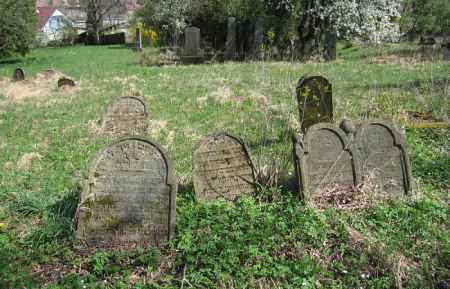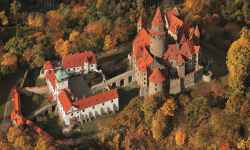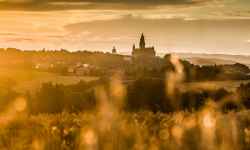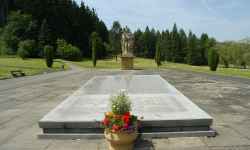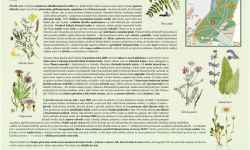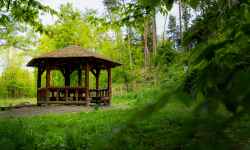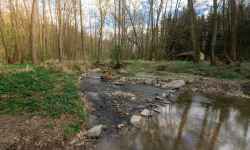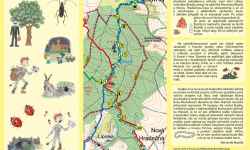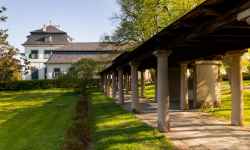|
aktuálně 2.0 °C skoro jasno 23.12. | zataženo | 1.6 °C 24.12. | zataženo | -0.9 °C 25.12. | jasno | -1.4 °C | Jewish cemetery in LošticeDid you know that there is a Jewish cemetery in Loštice near Olomouc? Its most ancient tombstones date back to the end of the 17th century and are shrouded in many stories. Discover this mystical place with a mysterious atmosphere.The cemetery was founded as early as 1554. On the cemetery's 6,500 square meters, you can count almost 650 tombstones with relief decorations. The most ancient ones, called stelae, date from the 1780s. You can recognize them because they consist of a single stone and are made of sandstone. They look plainer and feature longer Hebrew texts and reliefs with religious symbols that tell of the lives and merits of the dead. Newer tombstones from the mid-19th century onwards are more ornate, with fewer symbols and shorter texts, often bilingual - Hebrew and German. On tombstones from the end of the 19th century, the trace symbols and Hebrew disappear, German, predominates, and the tombstones are taller, composed of several parts, and their shape is more like obelisks in Christian cemeteries. They are often made of black granite and marble, so you can easily recognize them. This change is related to the general desire of the Jewish communities of the time to blend in with the surrounding Christian community and its culture and traditions. The oldest tombstones can be found in the upper corner of the cemetery, to the right of the current entrance - this was once the original entrance. This part is called the Cohen section. Among the essential tombstones is the so-called Tumba, of which there is only one - the tombstone looks like a sarcophagus, can you find it? It stands by the western wall, and in its place rests the revered Rabbi Aaron Moses Neuda of Loštice. The second tombstone to his right is the resting place of his son, the renowned Rabbi Abraham Neuda, who was one of the first-ever progressive rabbis in Moravia, a writer, and a scholar. Abraham's wife was the writer Fanny Neuda, who was very progressive in her time - her book The Hours of Piety was the first book of its kind ever written in German by a Jewish woman for Jewish women. Until then, women had used prayer books written only by men. But they could not capture and understand the needs and feelings of women. So Fanny put her experiences as a daughter, wife, and mother into the book. The local cemetery was used for burials until the beginning of World War II, and the last burial took place in May 1942 - just a few days before the deportation of the other Jewish citizens to the concentration camps. The name of the last buried was Ignac Schimerl, who lived with his father-in-law Otto Löf, the owner of the shop on Loštice Square, where the Café at Liska Bystrouška stands today. The cemetery is freely accessible and can be found at the end of Olomoucká Street, by the old road to Palonín (now Vejmoly Street). If you want to grab a bite to eat after visiting the cemetery, stop by the famous Olomouc cheese pastry shop. If you're up for more culture, you shouldn't miss the Museum of Olomouc cheese. 0%
| ||||||||||||||||||||||||||||||||||||||||||||||||
The system of interactive links for individual records in selected modules within the project Central Moravia - mainly quiet (2024) was implemented with the support of the state budget of the Czech Republic from the programme of the Ministry for Regional Development.
The optimization of the website and the online campaign within the project Adrenalin after ours (2023) were realized with the contribution of the state budget of the Czech Republic from the programme of the Ministry for Regional Development.
The website was created within the framework of the project Marketing TO Central Moravia 2020 implemented with the contribution of the state budget of the Czech Republic from the programme of the Ministry for Regional Development.
The operation and activities of Střední Morava – Sdružení cestovního ruchu (Central Moravia – Tourism Association) were supported by funds from the Czech Republic's state budget under a program of the Ministry of Regional Development of the Czech Republic.
The optimization of the website and the online campaign within the project Adrenalin after ours (2023) were realized with the contribution of the state budget of the Czech Republic from the programme of the Ministry for Regional Development.
The website was created within the framework of the project Marketing TO Central Moravia 2020 implemented with the contribution of the state budget of the Czech Republic from the programme of the Ministry for Regional Development.
The operation and activities of Střední Morava – Sdružení cestovního ruchu (Central Moravia – Tourism Association) were supported by funds from the Czech Republic's state budget under a program of the Ministry of Regional Development of the Czech Republic.
